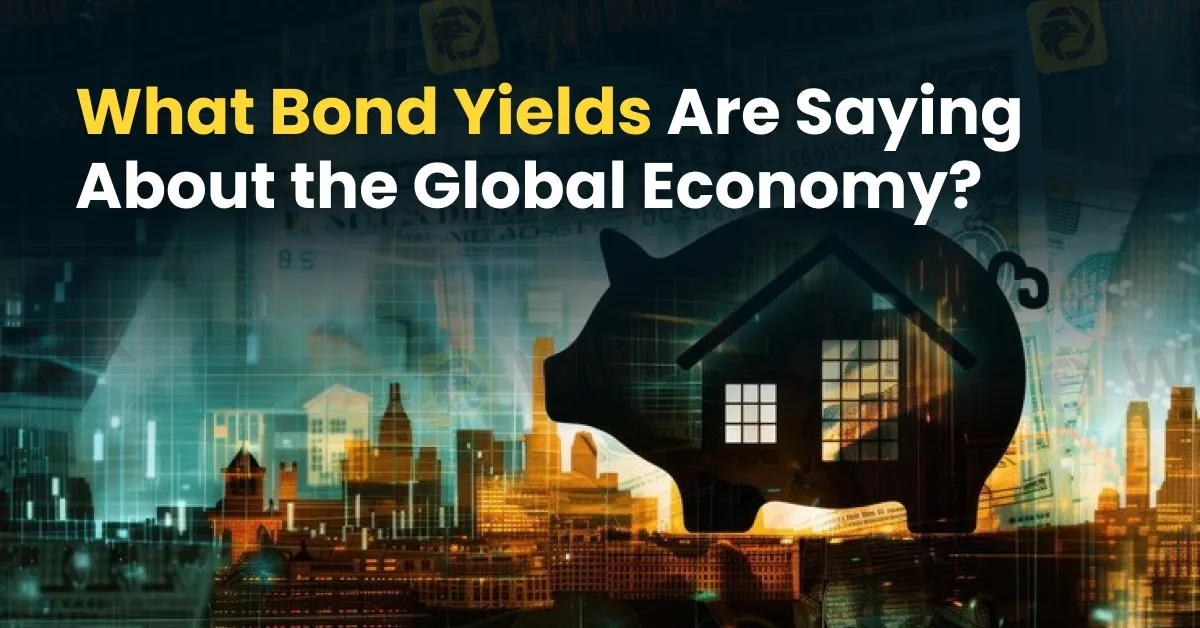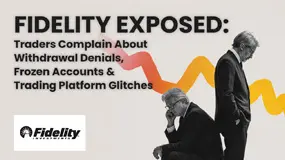简体中文
繁體中文
English
Pусский
日本語
ภาษาไทย
Tiếng Việt
Bahasa Indonesia
Español
हिन्दी
Filippiiniläinen
Français
Deutsch
Português
Türkçe
한국어
العربية
What Bond Yields Are Saying About the Global Economy?
Abstract:In a world increasingly driven by sentiment and speculation, few instruments offer a more sober and forward-looking perspective than bonds. Often overlooked by retail investors and sensationalist headlines, the bond market operates as a quiet but powerful barometer of economic expectations.

While investors may have been optimistic that last months financial market instability had passed, renewed fluctuations in U.S. Treasury yields indicate that market unease persists.
On Monday, the yield on long-term U.S. government bonds briefly climbed above 5%, marking its highest point since October 2023, before easing slightly.
This development came in the wake of Moody‘s decision on Friday to revise its outlook on the U.S. government’s credit rating, pointing to a decade-long rise in federal debt as a key concern.
At the same time, U.S. lawmakers are moving forward with a fiscal package that is expected to significantly expand the federal debt load, which currently stands at $36 trillion.

In a world increasingly driven by sentiment and speculation, few instruments offer a more sober and forward-looking perspective than bonds. Often overlooked by retail investors and sensationalist headlines, the bond market operates as a quiet but powerful barometer of economic expectations. From central bank policy to inflation forecasts and recession risks, yields and curves offer deep insights into where we are and where we might be headed.
At the heart of this narrative is the relationship between bond yields and interest rates. Government bonds, especially those issued by developed economies such as the United States, the United Kingdom, and Germany, are viewed as among the safest assets globally. The yields on these instruments are not merely reflective of the cost of borrowing, but they encapsulate investor sentiment, inflation expectations, and anticipated central bank actions.
Perhaps the most widely discussed phenomenon in recent times has been the inverted yield curve, that is, when long-term yields fall below short-term yields. In typical economic conditions, longer-term debt commands a higher yield, compensating investors for inflation risk and the time value of money. But an inversion suggests markets believe interest rates are set to fall, often due to an impending economic slowdown. Historically, such inversions have been reliable, albeit not immediate, predictors of recessions.
The bond market also offers real-time feedback on central bank policy. Consider the Bank of Englands struggle with sticky inflation. While policymakers may raise interest rates to combat price increases, falling yields on long-dated gilts can indicate that investors believe inflation will eventually be tamed or that aggressive tightening may overcorrect, leading to economic contraction.
Globally, the recent trend of falling yields despite relatively high policy rates is noteworthy. This may indicate a market consensus that rate hikes have peaked or that growth is expected to soften. Moreover, in economies where yields remain stubbornly high, such as emerging markets, investors may demand a premium for inflation risk, currency volatility, or political uncertainty.
Corporate bond spreads, another key metric, shed light on credit risk and business confidence. When spreads widen significantly over government bonds, it suggests rising concern about defaults or deteriorating economic conditions. Conversely, narrowing spreads are generally associated with improving risk appetite and economic optimism.
In essence, bonds act as the connective tissue between macroeconomic fundamentals and financial market expectations. Unlike equities, which can be swayed by corporate performance or investor hype, the bond market tends to focus on the long game, which includes growth, inflation, and monetary stability.
For traders, analysts, and policymakers alike, ignoring the signals emanating from the bond market comes at a cost. As the world continues to grapple with inflation volatility, geopolitical uncertainty, and shifting monetary regimes, the message from bonds may not always be loud, but it is often prophetic.

Disclaimer:
The views in this article only represent the author's personal views, and do not constitute investment advice on this platform. This platform does not guarantee the accuracy, completeness and timeliness of the information in the article, and will not be liable for any loss caused by the use of or reliance on the information in the article.
Read more

Fidelity Exposed: Traders Complain About Withdrawal Denials, Frozen Accounts & Platform Glitches
Does Fidelity Investments prevent you from accessing funds despite numerous assurances on your requests? Do you witness an account freeze by the US-based forex broker every time you request withdrawal access? Do you struggle with an unstable trading platform here? Is the slow Fidelity customer service making you face forced liquidation? These issues haunt traders, with many of them voicing their frustration on several broker review platforms such as WikiFX. In this Fidelity review article, we have shared quite a few complaints for you to look at. Read on!

Exposing The Trading Pit: Traders Blame the Broker for Unfair Withdrawal Denials & Account Blocks
Did you receive contradictory emails from The Trading Pit, with one approving payout and another rejecting it, citing trading rule violations? Did you purchase multiple trading accounts but receive a payout on only one of them? Did The Trading Pit prop firm refund you for the remaining accounts without clear reasoning? Did you face account bans despite using limited margins and keeping investment risks to a minimum? These are some raging complaints found under The Trading Pit review. We will share some of these complaints in this article. Take a look.

M&G Review: Traders Report Fund Scams, Misleading Market Info & False Return Promises
Applying for multiple withdrawals at M&G Investments but not getting it into your bank account? Do you see the uncredited withdrawal funds out of your forex trading account on the M&G login? Does the customer support service fail to address this trading issue? Does the misleading market information provided on this forex broker’s trading platform make you lose all your invested capital? Were you lured into investing under the promise of guaranteed forex returns? These issues have become highly common for traders at M&G Investments. In this M&G review article, we have echoed investor sentiments through their complaint screenshots. Take a look!

INZO Broker MT5 Review 2025: A Trader's Guide to Features, Fees and Risks
INZO is a foreign exchange (Forex) and Contracts for Difference (CFD) brokerage company that started working in 2021. The company is registered in Saint Vincent and the Grenadines and regulated offshore. It focuses on serving clients around the world by giving them access to popular trading platforms, especially MetaTrader 5 (MT5) and cTrader. The company offers different types of trading instruments, from currency pairs to cryptocurrencies. It aims to help both new and experienced traders. Read on to know more about it.
WikiFX Broker
Latest News
Forex Expert Recruitment Event – Sharing Insights, Building Rewards
Admirals Cancels UAE License as Part of Global Restructuring
Moomoo Singapore Opens Investor Boutiques to Strengthen Community
OmegaPro Review: Traders Flood Comment Sections with Withdrawal Denials & Scam Complaints
An Unbiased Review of INZO Broker for Indian Traders: What You Must Know
BotBro’s “30% Return” Scheme Raises New Red Flags Amid Ongoing Fraud Allegations
The 5%ers Review: Is it a Scam or Legit? Find Out from These Trader Comments
WikiEXPO Dubai 2025 Concludes Successfully — Shaping a Transparent, Innovative Future
2 Malaysians Arrested in $1 Million Gold Scam Impersonating Singapore Officials
Is FXPesa Regulated? Real User Reviews & Regulation Check
Currency Calculator



